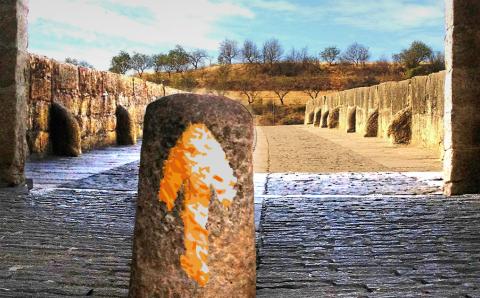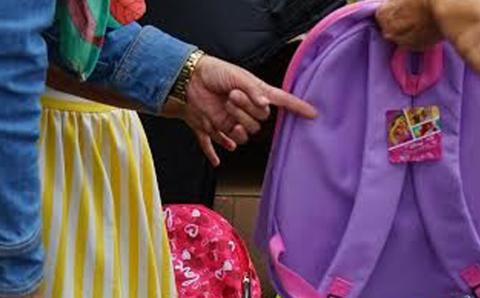“He spreads the snow like wool and scatters the frost like ashes” --Psalm 147:16
Imagine big, fluffy snowflakes gently drifting down. In the winter stillness, they gather in the empty trees and cover the fields like a blanket.
Does it snow much where you live? If it does, what do you do when it snows outside? Maybe you build a snowman or a fort. Or grab snowshoes or a toboggan and head for the hills. But have you ever wondered what animals do when the snow comes? God gave animals everything they need to live in a snowy winter world, so they know just what to do.
Under the Snow
A thick blanket of snow makes the world seem very peaceful and quiet. But just underneath is a whole other world of tiny scurrying feet. Warmth from the ground causes the snow directly above it to melt. That forms a sort of cave between the ground and the snow above. The temperature in this snow cave stays around 32°F (0°C) even when it is much colder outside, making it the perfect winter home for little animals like shrews, voles, and mice.
In the Snow
The ruffed grouse is a big chicken-like bird. It uses the snow to get out of the cold. When the snow is soft enough and deep enough, the grouse will build itself a snow tunnel to spend the night in. How does a bird build a tunnel? It starts by jumping from a tree into the snow. Then it uses its wings and feet to make the tunnel up to 10 feet (3 m) long. Like the snow cave, the grouse’s snow tunnel may warm up to 32°F (0°C) even when it is much colder outside. That helps the grouse save energy, and it doesn’t need to eat as much to stay warm. Spending less time out in the open also means less time for predators to see the grouse.
Snow Plungers
Being underneath the snow doesn’t mean total safety for the creatures who shelter there. After all, bigger animals like owls and foxes have to eat too! How do they catch a meal that is scurrying beneath a foot of snow? By snow plunging!
The great gray owl has very sensitive hearing and can listen for prey underneath the snow. When it hears the sound of animals moving underneath, it dives through the snow crust with its feet in order to grab its prey.
Did you know?
- The great gray owl is able to break through snow crusts that are hard enough to support an 80-pound (36 kg) person. They can reach prey as deep as 1½ feet (45 cm) under the snow!
- Foxes use their ears to find prey under the snow too. When they hear something, they pounce, plunging their front paws, head, and upper body deep into the snow. To see a video of a fox hunting in the snow, visit tinyurl.com/BannerFox.
On Top of the Snow
It is easy to walk on top of the snow when it is hard and crusty, but what about when the snow is soft and fluffy? That’s what snowshoes are for. Snowshoes work by spreading your weight out over a larger area.
The snowshoe hare’s “snowshoes” are its extra-large and very hairy hind feet. These big snowshoe feet allow the hare to walk, run, and hop on the fluffiest snow. As the snow gets higher and higher, the hare can reach more and more of the small fresh twigs it likes to eat.
The ruffed grouse has “snowshoes” too. In the fall, it grows fleshy, comb-like bristles called pectinations along the sides of its skinny bird toes. These bristles increase the surface area of the foot the way that a snowshoe does. In the spring, those bristles fall off.
Snow Fun
Do you like to go tobogganing when it snows? So do otters. When otters travel on snow, they bound for a few steps and then drop down onto their bellies and slide. They use their legs to push themselves along, almost like swimming. The marks they leave in the snow are called “otter slides.” Usually otter slides lead down a hill into water, but sometimes otters will even take a few slides where it is flat.
Tracks in the Snow
Watch for these animal tracks in the snow the next time you go for a winter walk in the woods or even in your neighborhood.
- Squirrels bound through the snow with their long hind feet landing in front of their smaller front feet. Squirrel trails usually go from tree to tree.
- Mouse tracks look like very tiny squirrel tracks. Two tiny front footprints behind two longer hind footprints--sort of like two crooked exclamation marks!
- Rabbit tracks make a long triangle. One front foot lands in front of the other, and the two long hind feet side by side in front of that.
- Don’t forget to watch for bird tracks too. Grouse and turkey tracks are probably the most common among the larger birds. Grouse tracks are smaller (about 2 inches long). Turkey tracks are bigger (4 to 5 inches long). Winter birds like cardinals and sparrows are much smaller!
After a fresh blanket of snow, animals leave their footprint signatures behind. Can you figure out which animals have been here? Draw a line between the animals and the correct footprints.
About the Author
Rachel Lancashire is a freelance writer with an educational background in wildlife. She grew up in the Christian Reformed Church and currently attends Gilmour Memorial Baptist Church in Selwyn, Ont.









